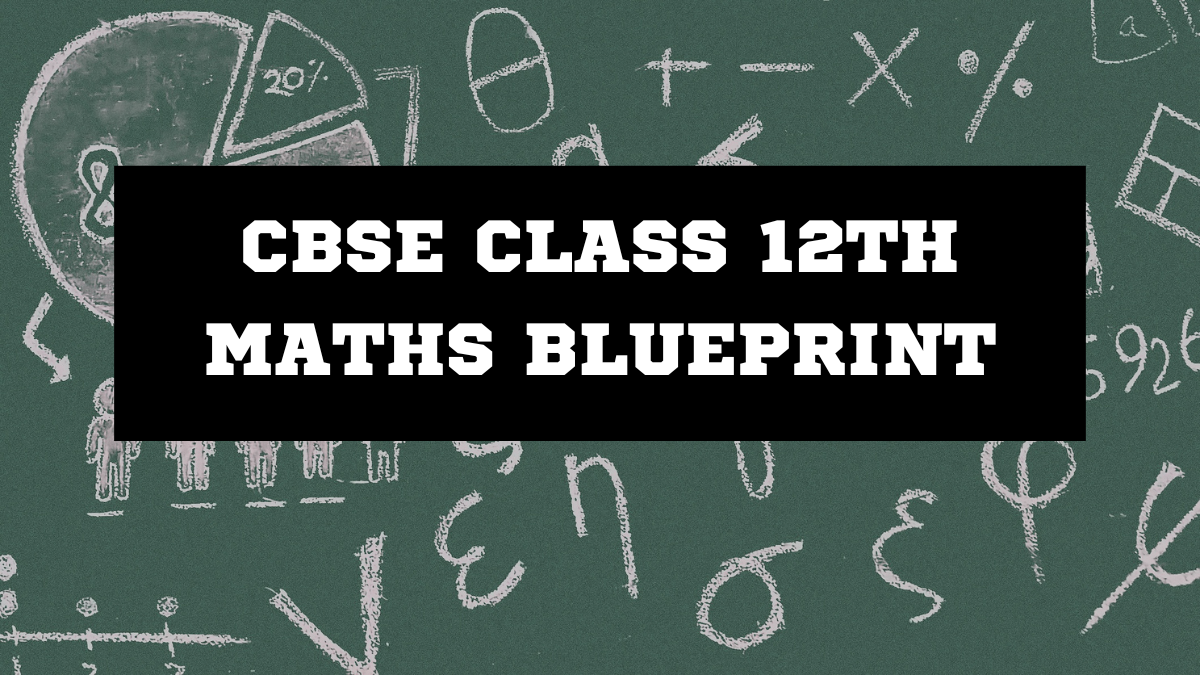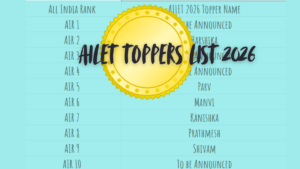Mathematics is one of the essential subjects in the CBSE Class 12 syllabus. Year after year, the students aim to score high marks in mathematics, among which, besides other subjects, the Class 12 CBSE board examinations are conducted. A good score in Maths not only lifts the overall score but also is a must for various competitive exams like JEE Main, JEE Advanced, CUET, and multiple other entrance tests.
We will provide the CBSE Class 12th Maths Blueprint 2026, along with chapter-wise weightage, to facilitate your better understanding of the exam.
CBSE Class 12th Maths Blueprint 2026
Blueprint is nothing but a design for a question paper to be set by CBSE, which includes :
- The distribution of the marks for each unit or chapter.
- Number of questions to be asked from each section.
- The nature of Questions.
- The distribution of the levels of difficulty: Easy, medium, and hard.
This lets them study in a focused manner instead of learning all chapters equally. For example, some courses, such as Calculus, have high scores (about 35), and some, such as Probability, have fewer marks. From the blueprint, the students could decide the weightage of the topics.
Class 12th CBSE Maths Exam Marks Distribution
Class 12th CBSE Maths question paper is of 80marks with 20marks of internal exam. Here is the chapter-wise distribution. You can check and follow the same.
| Unit | Chapter Topics | Marks Weightage |
| Unit I: Relations and Functions | Relations, Functions, Inverse Trigonometric Functions | 08 marks |
| Unit II: Algebra | Matrices, Determinants | 10 marks |
| Unit III: Calculus | Continuity, Differentiability, Application of Derivatives, Integrals, Application of Integrals, Differential Equations | 35 marks |
| Unit IV: Vectors and 3D Geometry | Vectors, Three-Dimensional Geometry | 14 marks |
| Unit V: Linear Programming | Linear Programming Problems | 05 marks |
| Unit VI: Probability | Probability | 08 marks |
| Total (Theory Paper) | 80 marks | |
| Internal Assessment | Project, Activity, Viva | 20 marks |
| Grand Total | 100 marks |
Detailed Class 12 Maths Chapter Wise Weightage
Now, below is the detailed analysis of each unit of the Class 12 Maths syllabus with its respective chapters:
1. Relations and Functions (08 Marks)
- Subjects: Relations, functions, binary operations, inverse trigonometric functions.
- Weightage: Medium -questions are generally between 1 and 4 marks.
- Tips: Go through domain and range-related, graph-related questions of Inverse Trigonometry.
2. Algebra (10 Marks)
- Chapters: Matrices – operations, inverse, properties.
Determinants – properties, adjoint, area of a triangle, solution of a system of linear equations using Cramer’s Rule. - Strategy: You should concentrate on determinants, solving linear equations, and small questions from matrices.
3. Calculus (35 Marks)
- Chapters: Continuity and Differentiability, Applications of Derivatives, Integrals, Applications of Integrals, Differential Equations
- Strategy: Practice application-based questions, then do lots of integration questions
4. Vectors and 3D Geometry (14 marks)
- Content: Vector algebra (dot product, cross product, scalar triple product), equations of lines and planes in 3D.
- Strategy: Be precise with vector properties and 3D geometry formulae. Graphical representation makes it very simple to work through.
5. Linear Programming (05 Marks)
- This newspaper is part of the concern: Linear constraints, feasible region, optimization problems.
- Preparation: Solve graph-based problems generally a scoring chapter.
6. Probability (08 Marks)
- Subjects: Conditional probability, multiplication rule, Bayes’ rule, independent events, random variables.
- Strategy: Do the numerical problems; probability can be difficult, but it is usually scoring.
CBSE Class 12 Maths Question Paper Pattern
Just as necessary as the blueprint is the understanding of the exam pattern.
- Total Time: 3 Hours
- Total Marks: 80 (Theory)
- Number of Questions: About 30 questions that are divided into sections.
- Expected Format:
Section A: Very Short Answer (1 mark each)
Section B: Short Answer I (2 marks each)
Section C: Short Answer II (4 marks each)
Section D: Long Answer (6 marks each) - The paper is typically a mixture of different levels of difficulty, like easy, moderate, and difficult.
| Related Posts | |
| CBSE Class 12 Maths Syllabus | CBSE Class 12th Maths Sample Paper |
How to Use the Blueprint for Preparation?
- You should decide what is going to be the focus of your preparation. The main subjects in the Maths syllabus that you can concentrate your work on are Calculus, Algebra, and 3D Geometry.
- Do not only focus on these high-weightage units. You should not neglect chapters such as Linear Programming, which may only carry 5 marks but are easy and score well.
- One of the ways to prepare for a test is to Solve Previous Year Papers. It enables one to grasp the exam pattern and also recognize the questions that may come again.
- Using NCERT is Very Important as all CBSE Maths questions are directly or indirectly from NCERT.
- Make sure that you manage your time effectively during your preparation period. While focusing on Calculus, do not forget to revise Probability and Relations regularly as well.
Preparation Tips for CBSE Class 12 Maths
- One formula sheet needs to be created – a formula sheet of all the topics, such as Calculus, Probability, Algebra, and Trigonometry, should be maintained in a separate notebook.
- Daily practice – Give 1 to 2 hours daily exclusively to doing the various types of questions.
- Sample papers & Mock tests should be done – Every year, CBSE publishes the sample papers; solve them within the given time.
- Time Management – During the exam, do the easier questions first, then continue with the longer ones.
- Revision Technique: Calculus should be revised every day (as it is the highest marks unit).
- The last 15 days should be spent on revising the previous year’s question papers.
Students can very easily achieve more than 90 marks in Mathematics through a combination of intelligent preparation and regular practice. The main thing is to completely understand the blueprint, do a thorough practice of the NCERT, try some sample papers, and revise formulas from time to time.










 AILET 2026 AIR 1: Check Full Toppers Lis...
AILET 2026 AIR 1: Check Full Toppers Lis...
 AILET Result 2026 OUT, How to Download S...
AILET Result 2026 OUT, How to Download S...
 CUET PG Crash Course 2026: Subject-Wise ...
CUET PG Crash Course 2026: Subject-Wise ...








